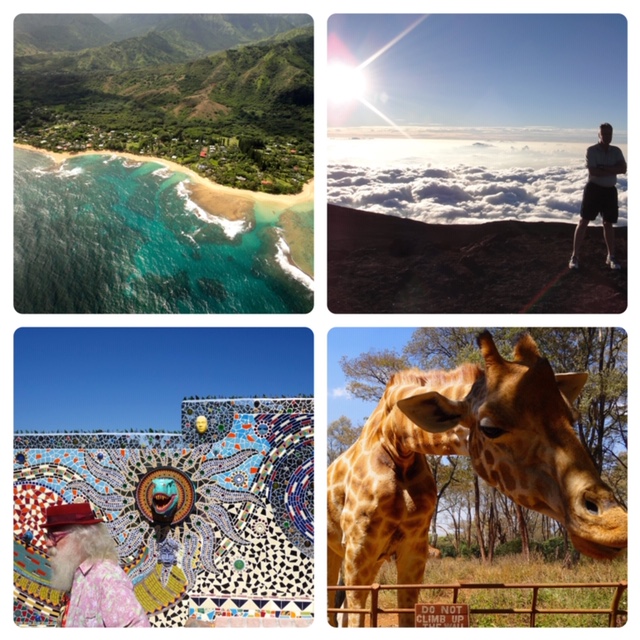
Stephen’s 6 most popular articles
Sometimes you simply can’t travel. That’s a good time to plan a future trip. It can be inspiring to read about places you might want to visit. With that in mind, we feature Stephen’s 6 most popular articles. Join us in learning more about Hawaii, Mexico, Sweden, Kenya, and China.
I try to write posts for Journeys With Stephen that are evergreen, i.e. continually relevant over a long period of time. They are full of pictures (worth a thousand words) and, speaking of words, can generally be read in less than 10 minutes.

1. Which Hawaiian island for the first-time visitor?
Even though I first wrote this post back in 2016, it continues to be highly read. I suppose that is because there are always a lot of people who dream of visiting Hawaii and then finally need help making that dream a reality.
Do you want balmy, soft sand beaches and plenty of ocean activities? Do you want mountainous interiors with jungles and waterfalls? Do you want good food and drink to go with a genuine Hawaiian spirit? This article discusses the pros and cons of each of the major islands – The Big island, Kauai, Oahu, and Maui. It is a 9-minute read.

2. 10 unusual things to do in Maui
Like everyone else, you’ve maneuvered the twisting road to Hana, braved the cold for sunrise at Haleakala, taken a sunset catamaran cruise, enjoyed the more authentic Old Lahaina luau, snorkeled off a famous beach. Are you ready for something a little more offbeat?
This post explores ideas that range from vodka production and tattoos to blowholes and behind-the-scenes tours. And you can read it in about 9 minutes.
Bonus idea. I wrote a separate post about how you can pilot a plane on Maui. Check it out!

3. 5 unusual things to do in San Miguel de Allende
The colonial city of San Miguel de Allende, nestled in the mountains of central Mexico, has plenty to offer visitors. What should you do after seeing the Parroquia, the Jardin, and sampling some of the 300 restaurants and dozens of art galleries?
Plenty of travelers have made the journey to SMA, but not everyone gets a tour of the mask museum or a private cooking lesson or explores the funky Chapel of Jimmy Ray with its eclectic owners. You can almost taste the homemade guacamole by spending about 8 minutes with this post.
Bonus idea. If this inspires you to visit San Miguel de Allende, check out my post on the best places to stay.

4. Visit Nairobi before and after a safari
Maybe you are planning to take a safari in Kenya – a wise choice. Even smarter, spend several days to visit Nairobi both before and after your safari. The city has interesting attractions worthy of your time. It is the perfect antidote to those long, dusty drives trying to spot wild animals.
The Internet is chock full of articles to help you find a safari, but this post talks about how to bookend that experience so that you enjoy it more. From the amazing Elephant Orphanage to the Giraffe Centre to Karen Blixen Museum, you can learn a lot and unwind at the same time. You can read this post in about 6 minutes.
And if you haven’t finished planning that safari, you might be interested in 8 mistakes we made on our first safari.

5. History comes alive at Sweden’s Vasa Museum
Imagine being transported back in time nearly 400 years to stand aside a real Swedish warship, the only surviving vessel of its kind from the 17th century.
This post is about Sweden’s Vasa Museum in Stockholm, arguably the greatest maritime museum in the world; but also tells the amazing story from the perspective of a crew member on the Vasa’s fateful voyage.
“Acke didn’t want to be one of the 145 seamen aboard Sweden’s Vasa warship for its maiden voyage in 1628. The work was hard, wages were low, and living conditions were atrocious. And this voyage was to last just 1,300 meters before he would have to swim for his life.” You can finish this story here in just 6 minutes.

6. Welcome to China, where you can’t speak, read, or write
Language challenges are part of the adventure of travel and make for interesting tales to recount later. In this post I tell numerous stories of my trials and tribulations in a light-hearted 6 minutes of prose and pictures.
And if that article simply intrigues you more about China, I have several for you to read. They include the secret Chengde Mountain Resort, China’s Huangshan floating mountain, and even one on Shanghai Disneyland. Enjoy!
Any comments? Please leave them at the bottom of this post.

Ways to deal with airport stress
I have taken more than a thousand flights, but I still admit to having airport anxiety. As a result, I have learned ways to deal with airport stress. After all, travel is supposed to reduce stress, not cause it! From leaving early to security tips to airport lounges, these practical ideas have helped me and should help you too.
1. Be prepared before you leave home
I have seen people scramble to find their passport just before leaving for the airport. Not good. Worse is finding out your passport, while not expired, is still not valid. What? Yes, most countries require that your passport have at least six months validity after the final day of travel. On top of that, your passport needs to have sufficient blank pages for visa stamps throughout your trip.
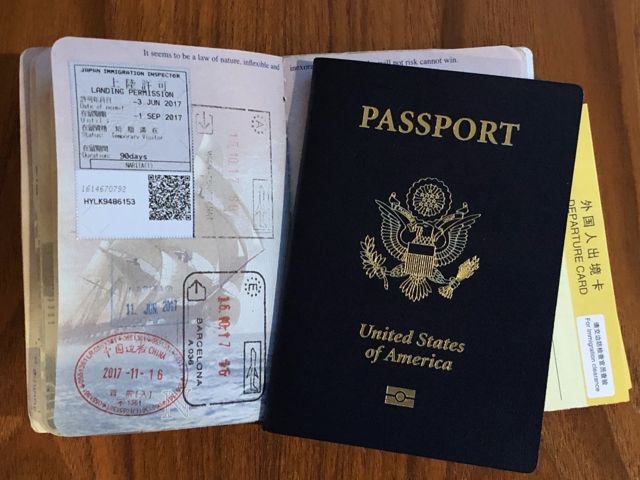
2. Go to the airport early
This might seem to be a given in avoiding stress, but I strongly suggest it is the number one way to avoid anxiety. There are plenty of ways to spend your time at the airport, as I will explain later. The recommendation for most major international flights is to arrive three hours before takeoff. Don’t try to cut it close.
Two of my most-used airports are Beijing (PEK) and Los Angeles (LAX). The traffic in these cities is notoriously uncertain at any hour. I also refuse to take airport shuttles that make multiple stops. If I drive, I make sure I use a parking lot I am familiar with, such as The Spot at LAX. I even sometimes rent a car in Orange County and drop it off at LAX, taking their bus to the terminal. It can be easier and cheaper than a long-term parking stay.
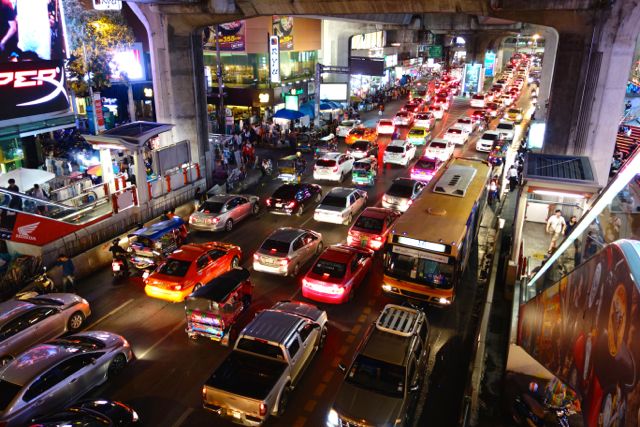
Having a few handy apps can also reduce stress. I always check FlightAware from home to see if my flight is on time or delayed. If you are unfamiliar with the airport, an app such as AtAirports can give good information about the layout and amenities.
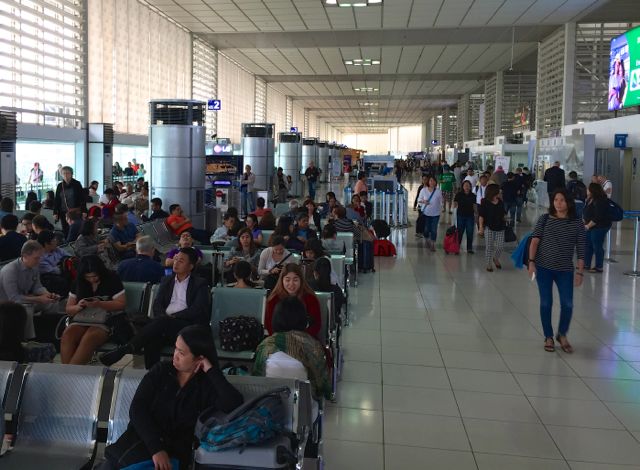
3. Skip the ticket counter, if possible
Lines at the airport induce anxiety. Some can often be avoided, starting with the ticket counter. I always try to check in online in advance and print my boarding pass, even if it is on my phone. That’s the first opportunity to skip the ticket counter or kiosk lines.
Next, I try to travel with carry-on only, so I don’t have to deal with the hassle (and possible expense) of checking a bag. That pays off even more when skipping baggage claim on the other end of the flight. If I must check a bag, I make sure I understand the airline weight limits – before leaving for the airport. I was allowed one weight limit on a flight from London to Dublin, but a lower one on the connection from Dublin to Killarney.
If you must deal with lines, keep in mind that, as the day goes along, the cumulative effect of things going wrong, such as delayed or canceled flights, kicks in. If you have a choice, book a morning flight. You will also arrive at your destination earlier, reducing stress there too.

4. Use priority security lines
One of the biggest unknowns and therefore, causes of stress at the airport is the length of time spent going through security. I arrived at Denver one time to encounter a security line wrapped around the airport. A similar experience occurred in Las Vegas. Now, I make sure to always use TSA-Pre, which I receive by virtue of my U.S. Global Entry status. The time savings from shorter and faster lines and stress-reduction have been enormous.
Another advantage of priority lines, especially in the U.S., is the ease – leaving shoes on, laptops in bags, toiletries in bags, etc. You still need to make sure you abide by the liquid limitations. Read about how I carry a drug store in a Ziploc bag.
Of course, there are not priority lines in 100% of the cases – another reason to arrive early!

5. Make use of airport lounges
So you have arrived early, skipped by the ticket counter and bag check, and breezed through security. With an eye on departure boards, you find yourself in the concourse with an hour or more to spare.
You can always shop. Some airports, such as Bangkok (BKK) are a shopping paradise. Singapore (SIN) is practically a destination in itself. One caution about buying amenities in airports: once I bought a simple tube of Crest toothpaste at the Beijing airport, only to have it confiscated by security for being too large. Why sell it there?
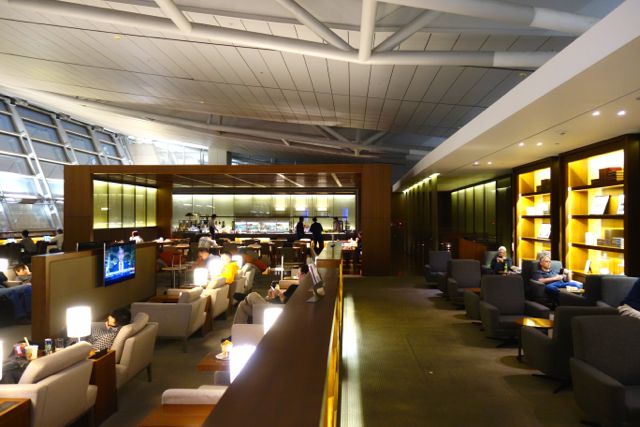
One of my best investments has been to carry a Chase Sapphire Reserve credit card. Included with it is Priority Pass, which gives me access to more than 1,200 airport lounges worldwide. So I can be flying economy on Jet Blue out of San Francisco (SFO) and hang out in the Air France lounge, eating and drinking, until my flight boards. I have used Priority Pass lounges from Tokyo to Zurich to Nairobi. I relax and enjoy the airport experience while the maddening crowds are outside the door.
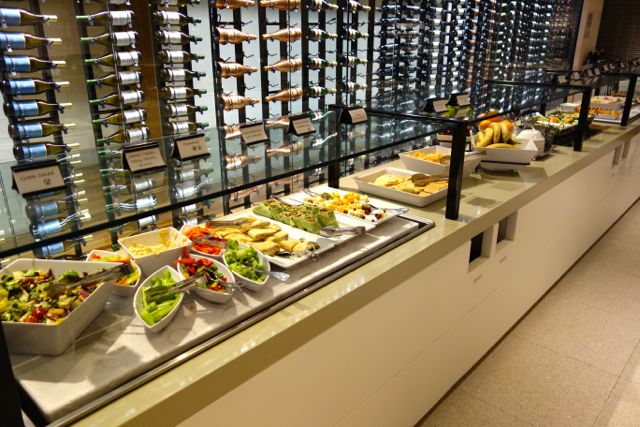
6. Choose regional airports, if possible
Most of this post has focused on big airports and international travel, but another secret to reducing stress is to use regional airports. From my home base of Orange County, California, I much prefer to fly out of John Wayne Airport (SNA) or nearby Long Beach (LGB) versus LAX.
Long Beach Airport is freeway-close, with easy parking, and a time-gone-by vibe. There aren’t even any jetways, as you walk outside using stairs to the front (and back) of the plane. Of course, that is the norm in many small countries, from Laos to Myanmar. The downside can be fewer flights and amenities, but the low-key atmosphere can make all the difference.
While on the subject of where to fly from, I can’t forget the recommendation on how to fly. I have written an entire post imploring you to always fly nonstop if possible!

7. Be polite to people
Ellen DeGeneres ends her show with the phrase, “Be kind to one another.” I thought I would end with that tip. I have encountered much less stress in airports by not inflicting stress. Be polite and friendly to a ticket agent, and you might be surprised how your request for a better seat magically appears. Be courteous to TSA agents – they have a thankless job. Be nice to gate agents and lounge receptionists and flight attendants. No matter what the challenge, try to deal with it in a civil way. You will be less anxious and so will the people around you.
Read about more airport travel advice here. Do you have anything to add? Feel free to comment at the bottom of this post.
What’s upscale?
Flying business or first class has its advantages, as does the Priority Pass for airport lounges.
What’s budget?
Take carry-on only to avoid baggage fees, and use public transportation to the airport when reliable. And remember, it doesn’t cost anything to be kind.

Stephen’s travel tips for 2018
Having traveled to 53 countries and more than 600 cities, I have learned some lessons about what to take, how to take it, and what to leave behind. Now I share these little secrets, from gadgets to apps to packing tips, in what I call Stephen’s travel tips for 2018.
Clearly the smart phone is the new Swiss Army knife of travel, taking the place of a bulky camera, heavy books, flashlight, alarm clock, notepad, maps, and more. Of course, until it can open a bottle of wine, it won’t replace a real Swiss Army knife. There are now scores of smart phone apps we travelers depend on. Here are some of my favorites.

1. Apps for the international traveler
WeChat app
Only around since 2011, this Chinese “app for everything” has an international version with some unbeatable features. Sign up your family and friends, and you can message (text, audio, and more) or call them (audio and video) for free over Wi-Fi from around the world. And this is only the tip of the iceberg for WeChat, whose payment system is turning China into a cashless society. No wonder there is more than 1 billion active users. Note: I still use Skype for one-time direct calls.
GlobeConvert app
How many Thai Baht to a U.S. dollar? What is 17 degrees Celsius in Fahrenheit? How many milliliters in a cup? GlobeConvert handles more than 160 currencies and 350+ physical units. If you are online, currency rates are updated every hour and saved if you are offline. Fast. Easy. Free. I use this app nearly every day in foreign countries.

Metro map apps
Say goodbye to paper maps and clumsy guidebooks. There are numerous apps that give you clear navigation for public transportation systems around the world. I use several, each usable offline. MetrO gives you point-to-point directions in more than 400 cities around the world. City Rail Map has beautifully drawn maps for about 60 international cities and is good for offline use. I like Explore Metro for easy-to-read subway maps for numerous cities across Asia.

FlightAware app
I nearly always check FlightAware before I leave for the airport. It tells me if my flight is delayed before the airline alerts me. I use it right up to wheels up for accurate departure and arrival information. Meeting an international flight? You can track its progress across the globe, so you know precisely when to meet your arrival party.
Google Translate and Waygo apps
OK, there are lots of translation apps out there, but I like Google Translate for its simplicity and the fact it features about a zillion languages. I still prefer Waygo for visual translation of Chinese, Japanese and Korean. I just point my phone’s camera at the words and real-time translation is displayed, including pronunciation. Perfect for signs and menus.
Pocket app
See a lengthy Internet article that you don’t have time to read right now? Pocket it to read offline later. Is the flight attendant telling you to switch into airplane mode? Just Pocket and keep reading. I use this app so much the people at Pocket recently informed me I was in the top 5% of their users, having read more than 300,000 words in 2017. To me it’s more valuable than iBooks or Kindle (but I need those too!).
What are your favorite travel apps? Feel free to comment at the bottom of this post.
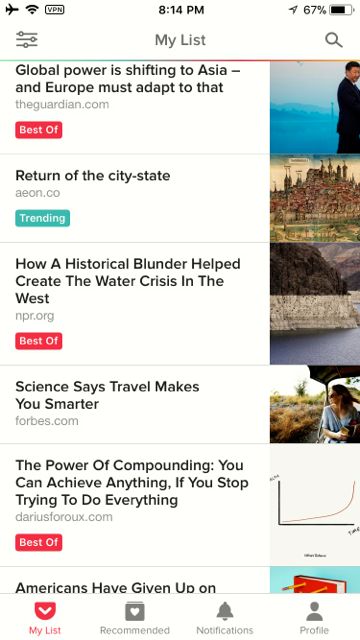
2. Simple electronic gadgets
Earbuds
I own two nice pairs of earphones, and I never travel with them. They just take up too much space in my carry-on daypack. These days noise-cancelling earbuds are the best answer for sound and size. And don’t forget to carry a two-prong adapter for planes that require that input.
Voltage converter
Even though phones and laptops and shavers pretty much handle voltage conversion, I find myself often using my little voltage converter. Sometimes it’s just a handy plug adapter; sometimes it’s needed for devices that might otherwise be damaged.
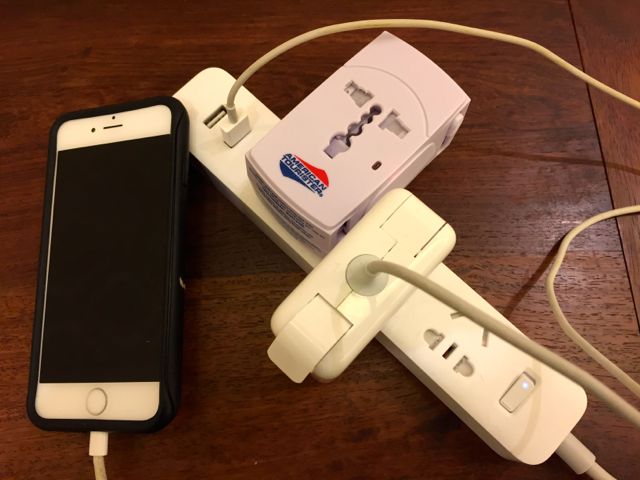
Surge protector
I was glad I took a multi-outlet power strip on an international cruise, as even my suite had few outlets in hard-to-reach places. And who knows what kind of power surges you might encounter in Laos, when the whole town of Luang Prabang loses electricity in the evening? A small surge protector can be a good investment.
USB drive and standalone device charger
Sometimes in a faraway land you just need to print a document. I have found the easiest solution at an upscale hotel is to hand them the file on a USB drive. Lastly, I always carry a tiny device charger, so my phone never runs out of battery, even on 20-hour journeys halfway across the world.
3. Drug store in a Ziploc bag
This travel secret was important enough for me to write an entire post about the need to carry a quart-sized Ziploc bag for medicines and another for first-aid. My carry-on backpack is never without these. Check out the details and pictures here.

4. Little things to pack for every trip
Leakproof plastic bottles
The airlines prohibit anything but small containers of liquids, but mouthwash and shampoos and conditioners and other lotions are sold in big containers. I have found the secret in leakproof plastic bottles. I found some at the Container Store, but they are easily available online. You never have to worry about spills in carry-on or checked baggage and you can take as many as will fit in a quart-sized bag.
Liquid dish soap
Carry it in leakproof bottles and you have your laundry soap for hand-washing clothes, quick stain removal, and other uses. Avoiding exorbitant luxury hotel laundry fees, this fits in with our upscale on a budget philosophy.
3-in-1 laundry sheets
Speaking of laundry, what if you are staying in a vacation rental property for a week, with a nice washer/dryer but no detergent, fabric softener or static control is provided? Stores usually only carry these in large containers. The answer is easy-to-carry 3-in-1 dry laundry sheets (available online). Throw one in with your load of clothes and voila!
Ziploc bags in various sizes
Plastic bags that zip shut are the Swiss Army knives of travel containers. Empty, they take up little room and weight in your bag. They are perfect for storing leftover food, that swimsuit that didn’t quite dry before your flight, pre-moistened hand wipes, and more. Unlike hard containers, they take up only as much room as their contents. I recently visited five countries in a month, and small Ziploc bags were handy for sorting the cash and coins of multiple currencies. I roll a bundle of empty bags and fasten with rubber bands and twist ties, which are handy in their own right.
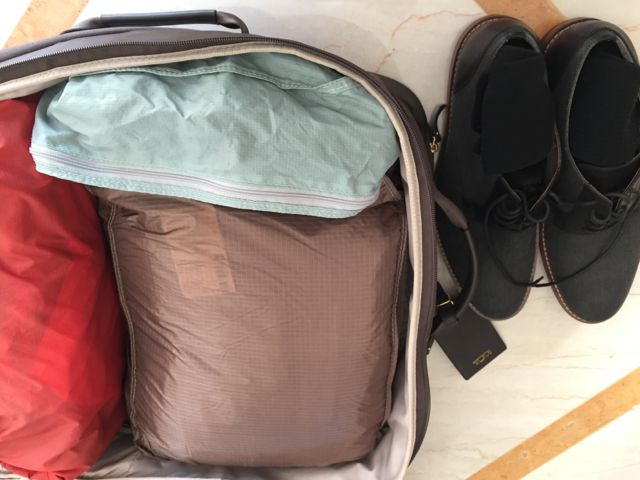
5. Other packing tips
Packing cubes
I recently became intrigued by packing cubes, not only as space savers, but also as a way, on shorter trips, to live out of a suitcase for several days. Your clothes and other items stay pretty organized.
Stuff your shoes
It seems everyone has a method for saving space, which is really important if you want to take a long trip with only a carry-on rollerboard. Most of us travel with several pairs of shoes. I always stuff mine with socks. The space savings is noticeable.
Pillowcase
I always take a pillowcase in my on-board Marmot daypack. Then, I roll my Mammut coat or a sweatshirt or sweater and place it inside for an instant pillow. I stopped carrying those bulky neck pillows, and go for the comfort of a soft pillowcase. It’s handy, even sleeping in business class, to have your own, familiar pillowcase to promote a good night’s rest.
Do you have any other packing tips? Feel free to comment at the bottom of this post.
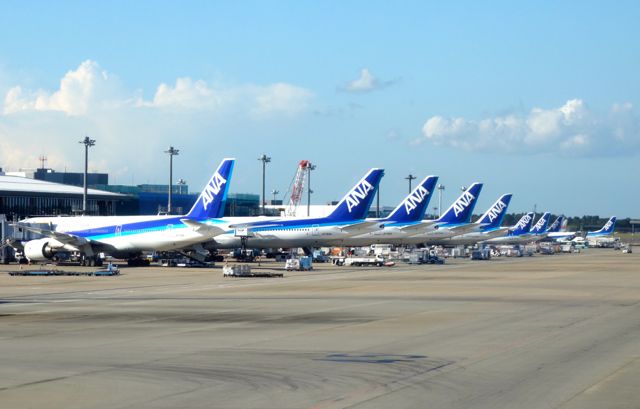
6. Fly nonstop with carry-on only
I have had enough bad stories with connecting flights that I wrote this post to explain why pay extra to fly nonstop. Adjunct to this advice is to always try to fly with carry-on only and not check a bag. In addition to not paying exorbitant baggage fees, there is also the time savings from not having to go to the ticket counter or to wait at baggage claim. Recently, I went ahead and checked a bag because I was flying on a small plane within Europe. Sure enough, my bag failed to arrive, leaving me scrambling for 24 hours without valuable items. And I was staying at an Airbnb, which the owner later admitted was not legal, so he didn’t want luggage delivered to the address. The moral of the story I already knew: try to fly with carry-on only.
7. Travel checklists
This tip for 2018 is a simple one, but one of the most important. I created a spreadsheet of all the items I could possibly take on a trip. Then, when I start to pack, I check items off the printed list. Rarely do I forget to pack something since I started this process. It’s especially good for things I don’t use everyday but need for a specific trip (a tie, foreign currency, umbrella, power cables).
Speaking of lists, if you take a long trip with friends or family, you are likely to have a lot of luggage, shopping bags, backpacks, laptop bags, etc. I always do a count: “OK, we have 9 pieces.” Then, when we depart the hotel room or taxi, I count again. It is surprising how many times a piece has been almost left on a rental car bus.
Finally, don’t stress. Most things are replaceable. I’m always asking myself and travel companions, “Do you have your passport, wallet, cell phone?” Armed with those three things, you are ready to travel!
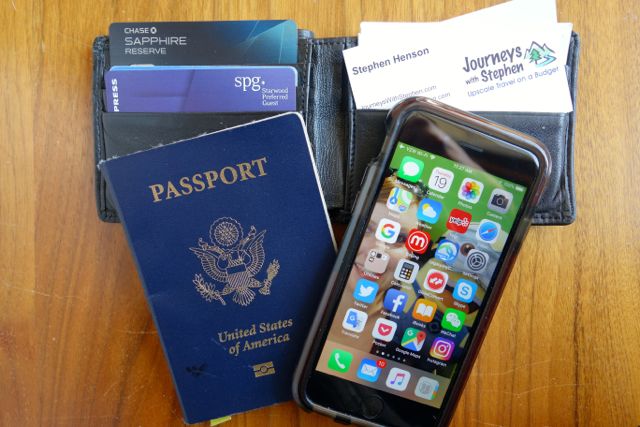
8. Tips and advice for 2019 and beyond
Not that many years ago I would have recommended a slick portable DVD player. That was replaced by an external drive to my MacBook Air that I could take or leave home. Now, thanks to streaming services, DVDs have gone the way of cassette tapes.
So what tips for 2018 will we look back on and chuckle about that advice? Will we stop using cash altogether throughout the world and pay in every country via our phones? Will voice translation via our phones (or watches) become truly real-time, eliminating the need to even learn basic phrases in a foreign language?
Will all devices become solar powered, so we can ditch the voltage converters and power strips? Can we travel with self-cleaning clothes? Will aviation authorities start letting us carry large liquids, placed in bags of all sizes that fly for free? OK, we may never see that last one, as the trend is headed in the other direction.
Still, I look forward to updating this list with innovative new ideas every year. Safe travels!

25 useful Chinese phrases for travelers
No matter what country you travel to, it is helpful to learn a few key phrases. For China this is important, because most people don’t speak English, and Mandarin is very different. Fear not. Try to learn a few words, and locals may point you in the right direction!

Before we begin, let’s clear up a few things:
The common words I present here are only intended to show people that you respect their language and have made the effort to learn a tiny bit. It is more for setting the tone for your interaction.
Speaking of tone, Chinese is a language of sounds, where a word can have vastly different meanings depending on the tone used. That is too complicated for this exercise. Fortunately, if people understand the context (“How much does this cost?” while you are holding an item in a store), they will probably understand you. I will also help by showing phonetic spellings here.
You won’t be able to read Chinese characters, but sometimes words might be written in both characters and in pinyin, the English alphabet version of Mandarin. I also include pinyin here.
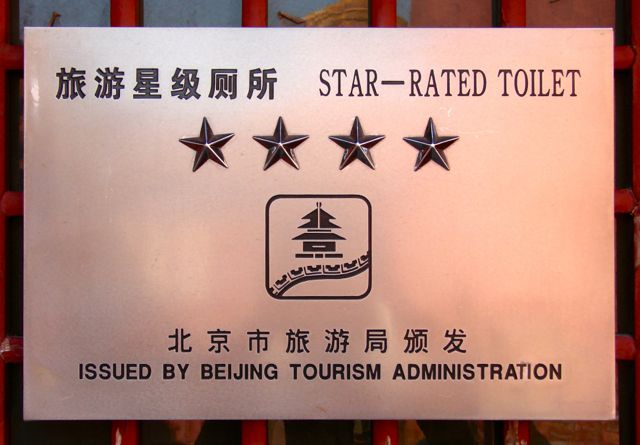
Keep it simple. I have seen guidebooks that teach you how to say in Chinese, “What types of hotel rooms do you have available?” If the desk clerk actually understands you, she will rattle off a long answer in Chinese, and you won’t have understood a word of her reply.
Learning how to say, “Do you speak English?” in a foreign language is a waste of time. That is the one question you should ask in English! The answer will range from, “yes” to “a little” to a headshake. Take it from there. She may even be anxious to try out her English on you!
While all written Chinese is the same, there are two very different spoken versions of the language (besides lots of dialects). Mandarin is the official version, which I present here. But if you are in the south of China or Hong Kong, you may hear Cantonese spoken. It is different, although most Cantonese can understand Mandarin. Got it?
I must reiterate that this is just a way to be polite and show you are making an attempt to communicate. Don’t forget to use apps for other purposes. For example, Waygo enables you to point your phone camera at a sign written in Chinese, and the app will translate it into English. Some apps allow you to speak and listen, but note, Google doesn’t work in China.

That said, let’s get started with some common, useful Chinese words for travel.
1. Hello, hi
ni hao (written in pinyin) pronounced as (nee how)
This is the most common greeting and can be said to everyone.
2. How are you?
ni hao ma? (nee how ma)
Just add “ma” to ni hao. Easy, right?
3. Good morning
zao (dzow)
A common, friendly greeting in the morning, instead of ni hao.
4. Hello (answer phone)
wei (way)
You will hear people answer their phones with wei instead of ni hao.
5. Good
hao (how)
Hopefully, it’s your answer to the question “ni hao ma?”
6. Very good
hen hao (hen how)
If you have made it this far, then “hen hao.”
7. Thank you
xie xie (shyeah shyeah)
This is the most mispronounced phrase by foreigners. Don’t say “shee shee!”
It is softer: sh-yeah sh-yeah or even see-yeah see-yeah.

8. You’re welcome
bukeqi (boo kuh chee)
If someone thanks you, say this in return. They will smile at your politeness.
9. No problem, it’s nothing
meishi (may shrr)
You may hear this often after you thank someone.
10. Sorry, excuse me
duibuqi (dway boo chee)
“Sorry” is usually in my top 10 for any language, because I say it a lot!
11. Good-bye
zaijian (dzeye jee-en)
Zaijian is somewhat formal. The good news is, you can just say “bye bye!”
12. 1, 2, 3
yi, er, san (ee, are, san)
Try saying this just before taking someone’s picture. It always brings a smile.
13. How much?
duo shao (doo-ah shaow)
14. Money, cost
qian (chee-en)
Duoshao qian would therefore mean, “how much does this cost?”

15. Bottle of water
ping shui (ping shway)
16. Cola
kele (kuhluh)
17. Waiter, attendant
fuwuyuan (foo woo yoo-an)
It’s all right to say that loudly in a restaurant to get his attention.
18. Please give me…
qing ni gei wo (ching nee gay wuh)
Then order a bottle of cola or water!
19. Bathroom or restroom
cesuo (tser swor) or weishengjian (way shung jee-en)
“Bathroom is where?” would be “weishengjian zai nar?”

20. U.S., America
Meiguo (may gwah)
21. China
Zhongguo (joong gwah)
22. Person
ren (ren)
So, for example, American is Meiguo ren
23. Yes, no
dui (dway), bu (boo)
This is trickier, as dui only means “correct,” not other ways to say “yes.”
You may often hear it quickly repeated, dui dui dui, like yeah, yeah, yeah.
And bu can be a little strong, which sometimes is bu hao or “not good.”
24. Beijing
Beijing (bay jing)
I include this city because Americans say bay-zhing, which drives me crazy.
It is a “hard j,” like jingle bells.
25. Shanghai
Shanghai (shahng high)
Mispronouncing this to rhyme with twang also drives me crazy.
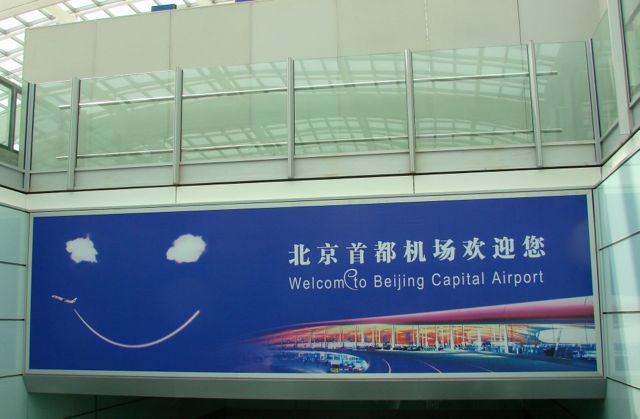
How to make this work? If you and a travel partner are making your first trip to China, I suggest you practice this on each other during the flight there. Then you can say “ni hao!” to “Zhongguo ren” on arrival.
And, if you’re looking for a bit more perspective on the adventures of trying to speak Chinese, take a few minutes to read one of my other posts: Welcome to China, where you can’t speak, read or write.
Look for a future post about useful Spanish phrases for travelers!
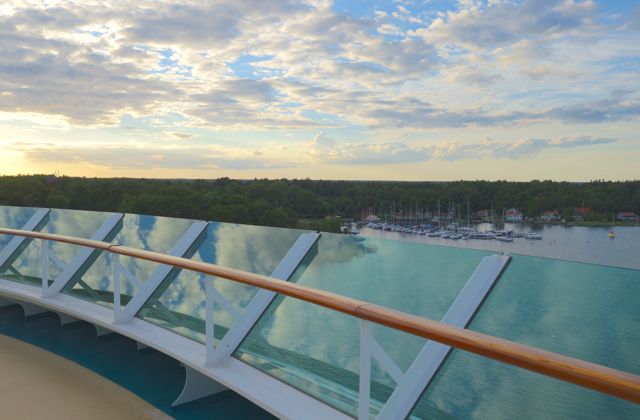
8 reasons to cruise upscale
I have never been in love with cruises. I like to figure out itineraries, ride trains, explore on my own. Besides, aren’t cruises just for old people and honeymooners? I finally take the plunge on a Baltic cruise and provide 8 reasons to cruise upscale on a budget.
I am attending a conference in Stockholm and thought it would be a cool idea to take the family on a Scandinavian trip. So I start charting our course. We will take a train from Stockholm to Oslo. Wait, that’s going to take most of the day. It’s the same with getting to Copenhagen. And there’s no good way to get to Finland except by boat. Plus, hotels are pricey. This is getting complicated, time-consuming and expensive.

1. Wake up to a different country every morning
Some itineraries are simply tailor-made for cruising. In this case, with a cruise ship we would have all day to explore a city and wake up the next morning in a new country. We will see Sweden, Finland, Russia, Estonia and Latvia, all in a week. No hassles with airports or connecting trains or traffic jams. This is supposed to be fun, right?
The same concept applies to the Caribbean, where I took a Disney cruise years ago. Awake each morning to a different island. Cruising is a good way to get a taste of a new destination to determine if you want to return or not.

2. See lands from a vantage point only offered by sea
It takes us three hours to reach the Baltic Sea as we cruise from Stockholm through the beautiful Swedish archipelago, topped by a spectacular sunset. And we get bonus views post-sunrise on the return leg. A ship is simply the best way to see this amazing scenery. The same could be said about the Alaskan coast, the Rhine River and many other lands, now becoming popular cruise vacation journeys.
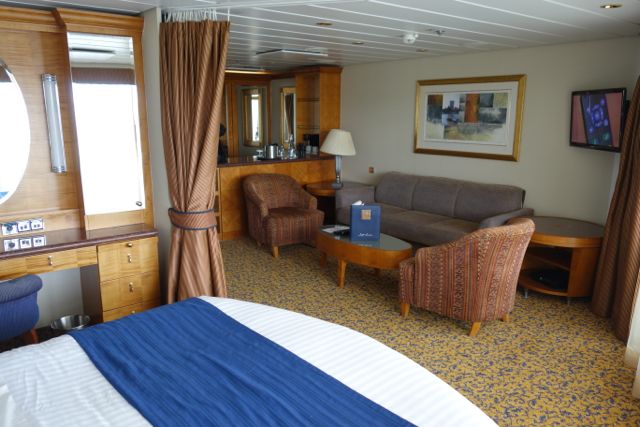
3. Unpack once
I’m not revealing anything new here, but it bears repeating. Even though we pack light (a carry-on and a backpack each), there is something to be said for putting everything away in drawers at the beginning of the trip and not rummaging through a suitcase. Also nice to not have to pack and unpack every day with each new location.
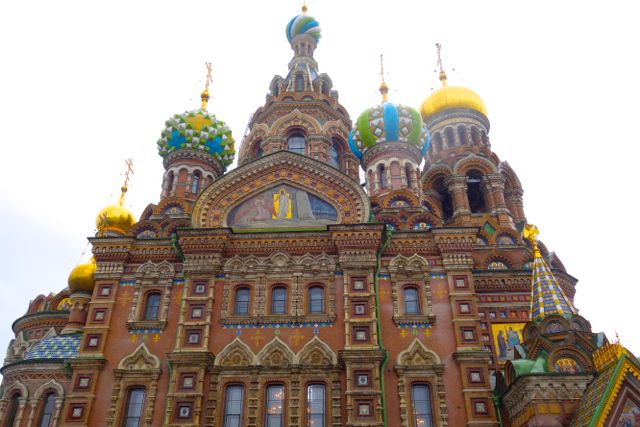
4. Easy to plan a complex itinerary
Thinking of going to Russia? It’s already one of my cruise stops. But Americans need a visa that isn’t a simple process. Not to worry. Whether you take an excursion through the cruise ship or an independent one, the Russian visa is taken care of as a temporary cruise ship visitor. In our case, we select a 2-day SPB Tour, a company that specializes in custom tours for smaller groups (15 of us) at a much lower price.
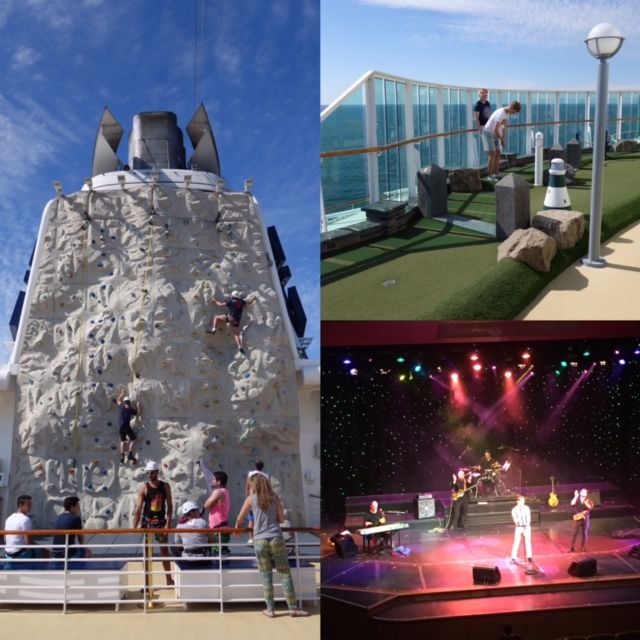
5. No, you won’t be bored onboard
I am one of those people who can only lie on a beach or at a pool for about an hour. I get bored easily. What am I suppose to do with a “day at sea?” It turns out that there are plenty of diversions for all ages and types of people.
No, I am not trying the rock-climbing wall, and I don’t gamble. My daughter and I do manage to get in a round of miniature golf. Then she goes off for a pedicure at the spa. I catch a live oldies rock ‘n’ roll concert, while a movie plays at the theater next door. Want something more physical? There’s a pick-up game of basketball on the opposite end of the ship from the large fitness center.
We barely scratch the surface of non-stop activities. I have brought a book, but rarely have time to read more than a few pages. I’m good with a day at sea, though I’m not sure about two or three.

6. Don’t be afraid to ask
In the main dining room my spouse happens to mention to our waiter that she really likes shrimp, except for those darn shells. He proceeds to bring her a double order of shrimp and then removes each one from its shell for her.
We order sparkling water the first night, and it magically arrives at the table each night thereafter. My daughter enjoys the pasta, but not the sauce, so they immediately come up with a sauce to her liking.
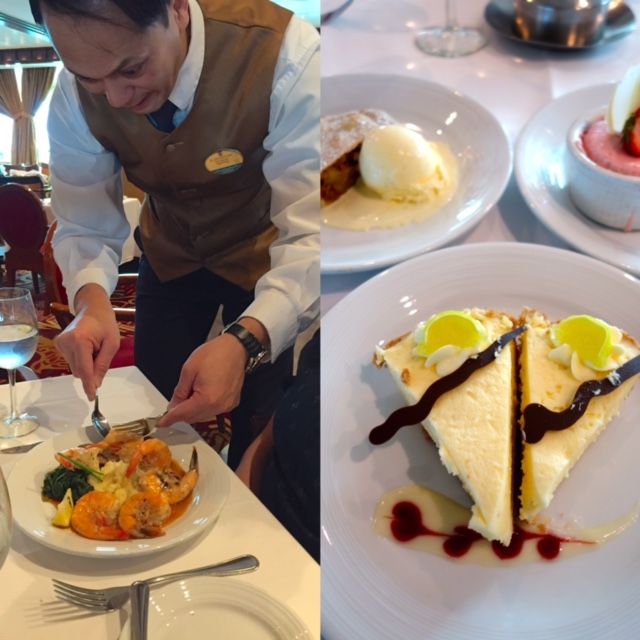
I say that I can’t wait to try the key lime pie tonight, so our waiter brings me a double order. The moral of the story is don’t be afraid to ask for what would please you.
7. One size does not fit all . . . lots of cruise options
I am pleasantly surprised to see a lot of diversity in the passengers on our Baltic cruise. Young and old. Singles, couples, and families. North Americans, Europeans, Asians. What we all have in common is an eagerness to learn more about this region of the world.
The options are now limitless. You can cruise on a 12-passenger boat through France. You can cruise on a ship with more than 5,000 guests and 2,000 crew members. You can cruise through a dozen ports in Southeast Asia or sail around the world.

8. Fits upscale on a budget
All those options play right into our goal of being upscale on a budget. Work with a travel agent and check out sites like Cruise Critic for good deals.
In our case Royal Caribbean’s Serenade of the Seas has a schedule that fits our plans well, ending just a few days before the start of my TBEX travel conference. It’s considered to be a mid-sized ship, with fewer than 2,000 guests and about 850 crew. I decide to go upscale, securing a Grand Suite with balcony on the “bump,” mid-ship. We are on the highest passenger deck 10.
The Grand Suite comes with amenities that make all the difference over the course of our journey. We have access to a Concierge Club, with free drinks and hors d’oeuvres. We proceed to consume hundreds of dollars worth of champagne and exotic drinks in this intimate atmosphere. We have breakfast each day in one of the specialty restaurants. We get early boarding and late disembarking. The list of other amenities is too long to list here.
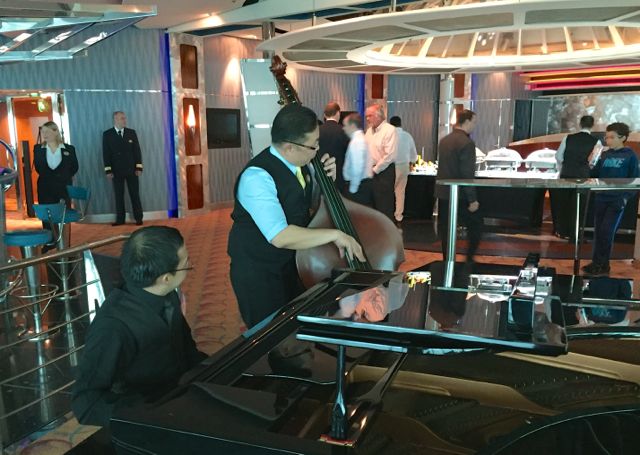
Best of all, we have our own friendly private concierge, who handles everything from reservations to general advice. He even plays bass at a private sushi party just for suite guests to meet the ship’s officers.
In a nutshell, you don’t have to choose a luxury liner to get a near-luxury experience.
Going upscale pays numerous dividends, but we are still on a budget. We get senior discounts and my daughter pays just 20% of the price. Significant onboard credits help with those unplanned expenses.
My only complaint on the whole voyage is abysmal Internet service, even when paying for the premium version.
All in all, the reasons for upscale cruising have never been more obvious. I guess I’m now a cruiser. What about you? Do you cruise? Do you have any tips and advice? Feel free to comment at the bottom of this post.
What’s upscale?
Reserving a Grand Suite on Royal Caribbean’s Serenade of the Seas provides a spacious room with balcony and a host of amenities, including a private concierge and free drinks in the private lounge.
Using SPB Tours in Russia was convenient, smaller group, customized.
What’s budget?
You can still get a good deal and be a big fish in the pond without having to book a luxury vessel.
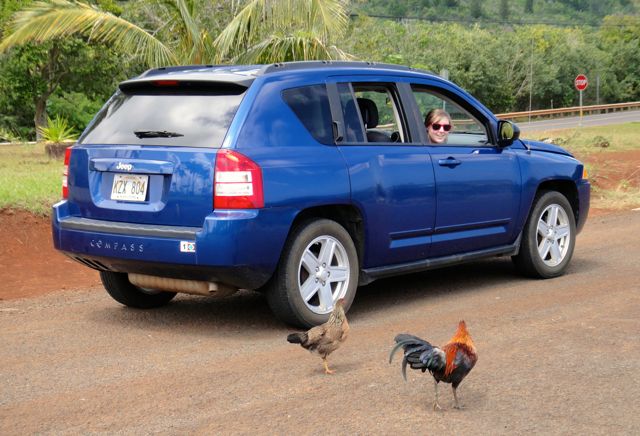
8 ways to save on rental cars
I know Chicago can be an expensive city, but the rental car quotes seemed really high, even though I had used Costco’s Low Price Finder to compare four brands. Then I decided to add an extra day to my rental period. Voila! The total price actually went down by $100.
You have to work at it, but there are numerous ways to save on rental cars. I will show you 8 ways to keep your budget in check, so you can splurge elsewhere. Please note this post is written for car renting in the U.S. only. Some of my tips may apply internationally, but I haven’t tested them outside the U.S.
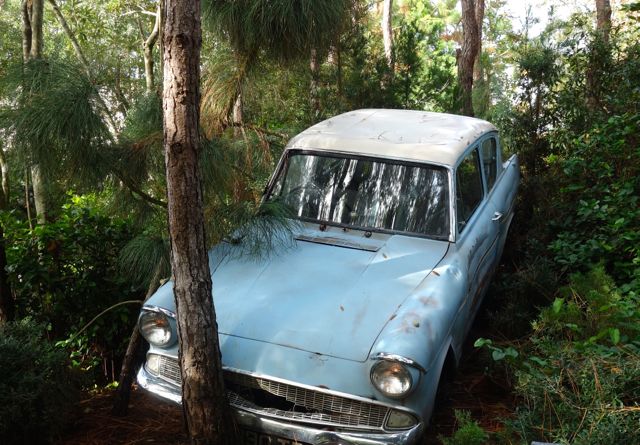
1. Use the right credit card for insurance
I think most people know by now not to check the boxes for insurance coverage. First, find out what your personal auto insurance covers. It is probably everything, after a deductable. Second, use a credit card that provides even more coverage. I now exclusively use my Chase Sapphire Preferred Visa card because of the free rental car insurance it provides.The card covers the entire loss, damage or theft of your car rental without reporting it to your insurance company, It’s safe to say I have saved thousands of dollars over the years by not checking those little boxes on the rental form.
2. Use a comparison tool
You can save both time and money by using an online tool that compares various car rental brands. My favorite is the Costco Low Price Finder, which applies all the discounts it knows about and then shows you all the cars from several brands. At the time of this writing, they featured Alamo, Avis, Budget and Enterprise. If you belong to one of those services, simply enter your ID number, and the reservation goes into their system too. I do this to ensure Budget’s Fastbreak service, where I can skip the rental counter.
3. Play with different days and lengths
It helps to know a little about your rental location. Chicago and San Francisco need lots of cars for business travelers during the week, but those cars sit idle on weekends. Therefore, a weekend rate at SFO or ORD can be significantly lower than weekday. Play with the booking tool to see when weekend rates apply. Arriving Thursday morning? You may benefit by picking up the car after noon.
In my example above, I needed a car in Chicago for 5 days. When I played a bit, adding a sixth day, it recalculated into a weekly rate, actually lowering the price. As there was no penalty for an early return (they can rent the car again), I used the vehicle for the original 5 days at the lower price.

4. Reserve far in advance then recheck
I knew I would need a rental car for a week on Maui. Because I booked the airline tickets far in advance, I decided to book the car too. However, I noticed a “featured coupon” on the Costco site was expiring before my trip and couldn’t be applied. I booked the car anyway. Then I went back a month later to discover a new eligible coupon and rebooked the car at a lower price.
I always suggest booking far in advance and then rechecking. For a one-week trip the airlines changed my flight times, arriving two hours earlier. I called the rental car company to simply arrange a pickup a little earlier. They were happy to do it because it meant recalculating my price at the latest rates – $130 more for the week! Needless to say, I declined, left the reservation alone and picked the car up early anyway – no questions asked.
Another lesson there. When in doubt, negotiate with the people at the rental counter. They know what the inventory looks like. Your car may be ready early. Or maybe you can score an upgrade, because they have a glut of vehicles one class higher than what you rented. They have more latitude than a phone agent.
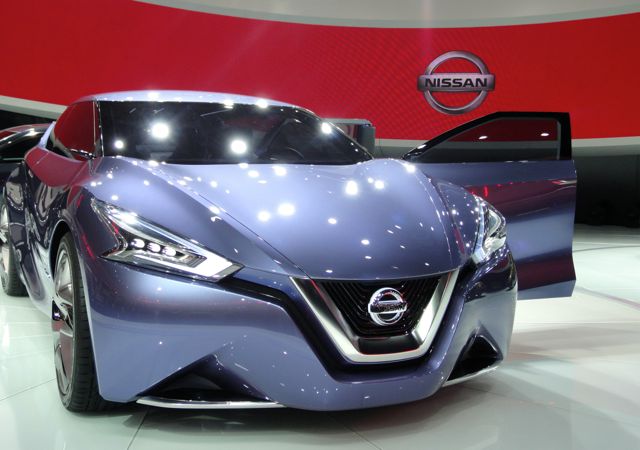
5. Try a service that rents by the hour
Sometimes you fly into a major city for a business meeting the next day, then fly home. Rental car companies love you, having no qualms about charging over $100 for a 24-hour weekday rental. Your hotel loves you too, easily tacking on $60 to $80 for overnight parking. But you can win this game by using a car-sharing service that rents by the hour.
I have used Zipcar many times in San Francisco. Cars are conveniently placed all over the city. I use BART (the train) to get into the city from the airport ($18 round trip) and then rent a nice Prius to drive to my meeting at about $10/hour for a few hours. Total transportation cost: around $50 instead of more than $150. Please note that Zipcar does require a small annual fee to belong.
6. Investigate new, specialty providers
I usually stick with the traditional brands, but sometimes a new rental car company can be right for the traveler who is upscale on a budget. Silvercar is one that comes to mind. All of their cars are semi-luxury Audi A4s, in silver of course. They are not cheap, but come equipped with a sunroof, black leather, satellite radio and even Wi-Fi baked into the price. That makes them compare favorably with other providers’ prestige offerings. There are deals for first-time renters, and the experience is 100% online.
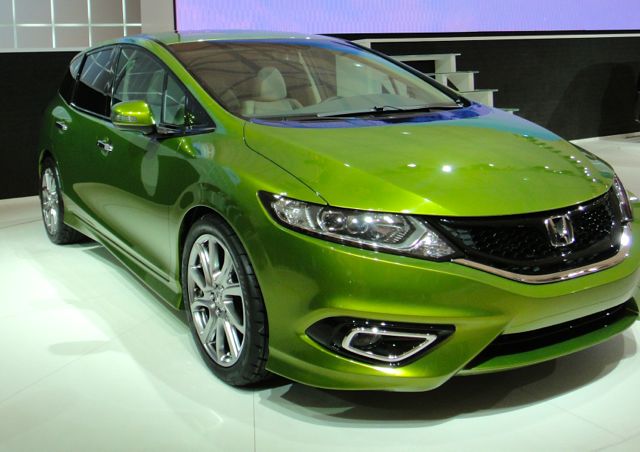
7. Watch out for add-ons
I have rented a minivan in San Francisco to drive clients down the Pacific Coast Highway through Big Sur to Los Angeles. Fortunately, there was no drop-off charge at LAX. Look out for that.
Sometimes the added fees can really cut into apparent savings. Take this case: Hertz.com shows a full-size car on a weekday in Chicago as $78 – already too expensive in my book. But wait, that doesn’t include an airport concession fee recovery, customer facility charge, energy surcharge, and taxes. Together they add more than $36 a day to the price! The real price is $114! (Note: at least Costco’s tool presents the total price in its calculations, not the unbundled cost. They also waive any additional driver fees if you reserve through them.)
Hertz would also like you to sign up for “convenience options.” Think $8/day for satellite radio, $14 for a child seat, and a whopping $17/day for GPS – you know, the feature that is on your phone for free. Watch out for add-ons!
8. What I personally don’t do
Everybody has an opinion about how to save money. You have read some of mine. Here is what I don’t do. I never prepay for a gas. Yes, filling up just before returning is one more thing to remember, but the savings is significant.
I don’t prepay for the vehicle. I know there is a savings, but it comes at a price. I like to be able to change my mind and cancel a reservation without a penalty. (Your mileage may vary).
I don’t often choose off-airport locations. Yes, sometimes they can be a little cheaper; but the hassle and expense of getting there and back, usually older inventory, and fewer choices make this a non-starter for me. Be careful, too of business hours. What if your plans change, and you need to stay in town for dinner, catching a later flight. But wait, that off-airport location where you rented from closed at 5:00pm. Now what?
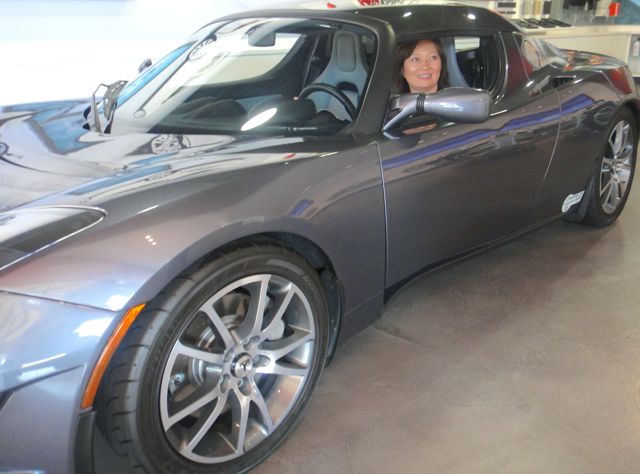
Don’t forget to splurge!
If you follow these tips you are certain to save money. Since we are upscale on a budget, we usually like to take those savings and spend them elsewhere. How about next time renting a shiny new Tesla?
